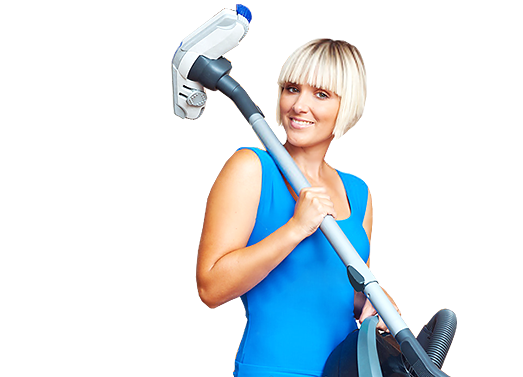A Dust-Free Sanctuary: Home Tips for Reducing Allergens
Posted on 29/09/2025
A Dust-Free Sanctuary: Home Tips for Reducing Allergens
Do you find yourself sneezing or feeling stuffy while at home? Allergens like dust mites, pet dander, mold, and pollen can turn the place you love most into an allergy zone. Creating a dust-free sanctuary is essential for those seeking comfort and better health, especially for individuals with asthma or allergies. This comprehensive guide will unveil proven home cleaning strategies and everyday practices to significantly reduce allergens and improve your indoor air quality.
Why Should You Care About Indoor Allergens?
Many people underestimate the impact of allergens nestled indoors. According to the American Academy of Allergy, Asthma, and Immunology, indoor air can actually be more polluted than outdoor air. Choosing to reduce allergens in your living space isn't just about comfort; it's about safeguarding your respiratory health and overall quality of life.
- Allergens trigger respiratory issues, including sneezing, coughing, runny nose, and even asthma attacks.
- Dust, mold, and pet dander can aggravate existing health conditions.
- Poor indoor air quality can decrease sleep quality and daily productivity.

Understanding Common Household Allergens
Before tackling allergens, it is essential to know your enemy. Here are the most common home-based allergens:
- Dust Mites: Microscopic creatures that thrive in bedding, upholstered furniture, and carpeting.
- Pet Dander: Tiny flakes of skin, fur, or feathers shed by cats, dogs, or birds.
- Mold Spores: Fungi that flourish in damp or humid environments such as bathrooms and basements.
- Pollen: From plants and flowers, often carried inside by wind, clothing, or pets.
- Cockroach Droppings: A potent allergen often overlooked, especially in urban environments.
Proven Strategies for a Dust-Free, Allergen-Reduced Home
1. Clean Smart, Not Hard
One of the most effective ways to remove allergens is by sticking to a consistent cleaning routine. Here's how to maximize your cleaning effort:
- Use a damp microfiber cloth instead of dry dusters to trap and remove dust, rather than redistribute it into the air.
- Vacuum with a HEPA filter at least once a week. High-efficiency particulate air (HEPA) filters can capture even the smallest allergen particles.
- Don't forget less visible areas like behind furniture, under beds, and on window sills where dust accumulates.
2. Control Humidity Levels
Moist environments are a breeding ground for dust mites and mold. To create a dust-free environment:
- Maintain indoor humidity between 30-50%. Use a dehumidifier, especially in basements and bathrooms.
- Fix leaks immediately. Standing water can encourage mold growth.
- Ventilate well when showering, cooking, or using appliances that produce steam.
3. Eliminate or Minimize Carpets and Rugs
- Carpets and area rugs can act as dust and dander magnets.
- If possible, opt for flooring such as hardwood, tile, or linoleum, which are much easier to clean and don't trap particles.
- If rugs are necessary, choose low-pile or washable varieties and wash them regularly.
4. Wash Bedding and Fabric Frequently
Dust mites thrive in beds, pillows, and upholstered furniture. To keep them at bay:
- Wash all bedding, pillowcases, and blankets weekly in hot water (at least 130?F).
- Encapsulate mattresses and pillows with allergen-proof covers.
- Consider replacing pillows every 1-2 years and mattress every 7-10 years.
5. Keep Pets Clean and Groomed
Pet dander is a major trigger for allergies. While pet love is precious, minimizing their impact on household allergens is crucial:
- Bathe and brush pets regularly to reduce dander.
- Designate pet-free zones in your home, especially the bedroom.
- Wash pet bedding and toys frequently.
6. Improve Ventilation and Air Purification
Fresh air and proper filtration are your allies in the quest for a dust-free environment:
- Open windows when air quality is good, especially after cleaning or cooking.
- Install high-efficiency filters in heating and cooling systems and replace them as directed.
- Consider using portable HEPA air purifiers in high-traffic or sleeping areas.
7. Declutter to Reduce Allergen Hiding Spots
A cluttered home provides more surfaces for dust and allergens to accumulate:
- Keep surfaces clear and organized.
- Donate or store unused items, especially old textiles and books.
- Opt for easy-to-clean decor and avoid heavy drapes or intricate objects that trap dust.
8. Maintain Shoes-Off Policy Indoors
Shoes carry in pollen, dust, pesticides, and various contaminants:
- Leave shoes at the door to prevent outside allergens from spreading indoors.
- Provide slippers or indoor footwear for added comfort.
- Regularly mop entryways to capture any particles tracked in.
Targeting Specific Rooms for Allergen Reduction
Bedroom
As we spend about a third of our lives sleeping, the bedroom must be a prime focus for dust-free sanctuary efforts.
- Keep windows closed during high pollen seasons.
- Invest in hypoallergenic bedding and minimize plush toys or unnecessary fabric decor.
- Vacuum and clean under the bed regularly.
Living Room
This high-traffic area harbors a host of allergens:
- Choose leather or vinyl furniture over fabric-upholstered options.
- Launder slipcovers and curtains often.
- Keep houseplants minimal and monitor them for mold growth on the soil's surface.
Kitchen
The kitchen can hide mold and attract cockroaches:
- Clean under appliances and inside cabinets at least monthly.
- Take out trash regularly and keep food sealed.
- Use exhaust fans to decrease moisture and reduce mold.
Bathroom
A hotspot for mold due to constant moisture:
- Use a bathroom fan or open a window during and after bathing.
- Clean tiles, grout, and shower curtains weekly with mold-inhibiting cleansers.
- Fix leaky faucets and clean up spills promptly.
Best Products for Reducing Home Allergens
Today's market offers a wide range of products designed to help make your home a truly dust and allergen-free sanctuary:
- HEPA Vacuums: Capable of trapping 99.97% of particles down to 0.3 microns.
- Allergen-Proof Mattress and Pillow Covers: Impermeable to dust mites and dander.
- Dehumidifiers: Essential for keeping humidity low and mold at bay.
- HEPA Air Purifiers: Excellent for bedrooms and living rooms.
- Natural Cleaning Products: Opt for non-toxic, fragrance-free cleaners to avoid adding irritants to the air.
Advanced Tips for an Ultra-Dust-Free Home
Regular Home Maintenance
- Replace HVAC and furnace filters every 2-3 months.
- Seal cracks and gaps near windows and doors.
- Schedule regular air duct and chimney cleanings.
Allergen Barrier Techniques
- Install doormats inside and outside every entrance.
- Add weather stripping to doors and windows to minimize pollen intrusion.
- Invest in UV light purifiers for central air systems, targeting mold and bacteria.
Eco-Friendly Approaches
- Use natural fibers like cotton and linen, which harbor fewer allergens than synthetics.
- Place natural air-purifying plants (like spider plants or peace lilies) but monitor them for mold.
- Prioritize recyclable and hypoallergenic materials throughout your home.

Frequently Asked Questions
How often should I clean to maintain a dust-free sanctuary?
It's recommended to dust and vacuum at least once a week. Bedding and curtains should be washed weekly to maximize allergen reduction. Consider a daily quick-clean for high-traffic areas and seasonally deep-clean the entire house for best results.
Are air purifiers worth the investment?
Yes, HEPA air purifiers are highly effective at removing airborne particles such as dust, pollen, pet dander, and even some bacteria and viruses. For allergy and asthma sufferers, these devices can provide noticeable relief.
Is it possible to be completely allergen-free?
It's challenging to eliminate all allergens, but following thorough dust-free and allergen-reducing practices can minimize exposure significantly and make your home much healthier and more comfortable.
Conclusion: Create Your Own Dust-Free Sanctuary
A cleaner, healthier, and more comfortable home is within reach. By implementing these strategic tips for reducing household allergens, you create not just a dust-free sanctuary but also a nurturing environment where you and your loved ones can breathe and thrive. Consistency is key--make cleaning a habit, invest in the right products, and don't hesitate to seek professional help for severe mold or persistent issues.
With determination and the expert-backed advice above, your home can become the dust and allergen-free haven that you truly deserve.
- Breathe easier. Sleep better. Live healthier.
- Start your journey to a dust-free sanctuary today!




